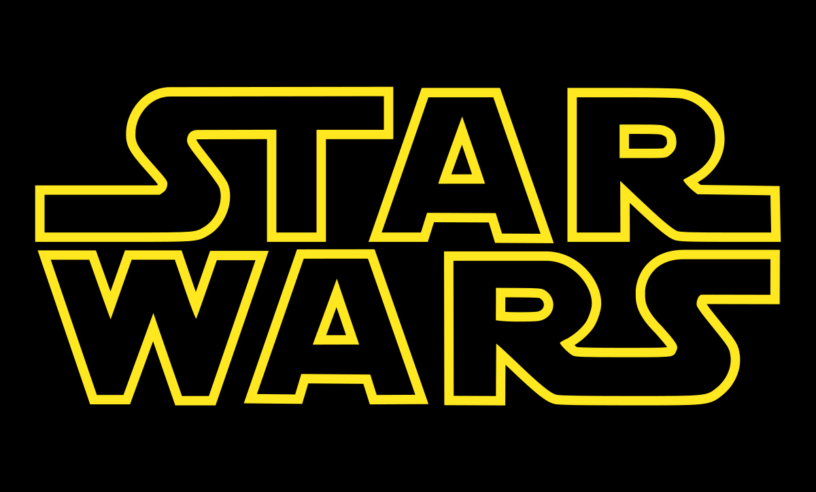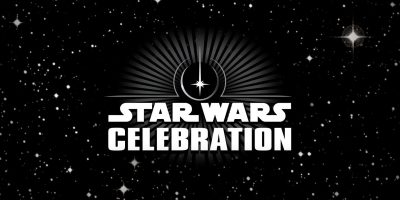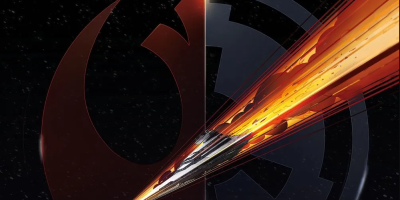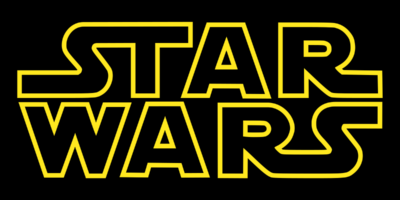Forty-two years of Star Wars history will culminate with the release of Star Wars: The Rise of Skywalker on Friday. However, some fans will get to see early showings of the film on Thursday night.
Although critical reactions appear to be mostly mixed so far, we all know that critics tend to share just one brain cell and usually don’t know a good film when they see one. Besides, it’s not like the film contains “I don’t like sand” as a pick up line, right? (No offense to anyone, it’s just a joke!)
All of that aside, the end of the Skywalker Saga is momentous in its own right. Its origins can be traced back to the early 1970s, with nearly 50 years of history since its inception by Star Wars creator George Lucas.
Here is a look back at Star Wars through the years, with the good and the not so good.
1970s: The Story Begins
The story of Star Wars can be traced back as early as 1971, when George Lucas started to create his own space opera.
On April 17, 1973, Lucas began to develop his story into a screenplay, which had its first draft completed by May 1974. Lucas continued to develop the story, eventually deciding it was too long for one movie and instead chose to focus on the first third of the story.
Although the story changed over time, as all stories do when in development, there was always a consistent theme of a young man, a young woman and their father. This would later develop into the character arcs of Luke Skywalker, Leia Organa and their father, Anakin Skywalker/Darth Vader.
For the first film, Lucas hired relatively unknown actors to play his lead roles. The role of Luke went to Mark Hamill, while Carrie Fisher was cast as Leia. Harrison Ford, who had worked with Lucas on his film American Graffiti in 1973, was cast as Han Solo, the smuggler. The cast was rounded out with Peter Mayhew as Chewbacca, Anthony Daniels as C-3PO (who has starred in every film of the Skywalker Saga), Kenny Baker as R2-D2, David Prowse as Darth Vader (with James Earl Jones providing Vader’s voice), Sir Alec Guinness as Ben “Obi-Wan” Kenobi and Peter Cushing as Grand Moff Tarkin.
Star Wars, later retitled Episode IV: A New Hope opened on May 25, 1977 and the history of cinema was forever changed. Mark Hamill, Carrie Fisher and Harrison Ford became superstars in their own right and Star Wars became a movie for the ages.
The following year, on November 17, 1978, the Star Wars Holiday Special premiered on CBS. The holiday special is notorious for being abysmal. Indeed, that was the only time it has ever been shown on television and it has never been officially released. Hell, you pretty much have to be drunk, high, and/or extremely tired in order to sit through that disaster.
By 1979, work on the sequel to the first film was underway, and the saga would get more detailed as the 1980s began.
The 1980s: Completion of the Original Trilogy and the Premiere of New TV Specials
The Empire Strikes Back, often hailed as the greatest movie in the saga, was released on May 21, 1980. It featured the return of most of the principal cast and introduced Lando Calrissian, played by Billy Dee Williams and Yoda, performed by Frank Oz. Of course the most iconic part of the sequel was the revelation of Darth Vader as Luke’s father. Though only touched on briefly at the end of the film, it served as the biggest plot twist in the movie and shocked fans and stars who were in the dark.
The trilogy concluded on May 25, 1983 with the release of Return of the Jedi. Once again the principal cast returned. Return of the Jedi also marked the first appearance of Ian McDiarmid as The Emperor, the supreme ruler of the Empire and Vader’s master. McDiarmid would go on to reprise his role in the prequel trilogy and will appear in The Rise of Skywalker. In addition, McDiarmid re-shot a scene featuring The Emperor in The Empire Strikes Back for the DVD release in 2004.
During the 1980s, the first two animated series of Star Wars was released. Star Wars Droids followed the adventures of C-3PO and R2-D2, while Ewoks followed the adventures of Wicket, the Ewok who bonds quickly with Leia in Return of the Jedi. Droids and Ewoks were short lived, however, with both of them lasting just one season.
The 1990s: Work on a new trilogy begins
By 1992, Lucas acknowledged his intentions to proceed with the prequel trilogy of films that would focus on Anakin Skywalker in his youth and show his fall to the dark side. Technological advancements in film convinced Lucas it was time to make the trilogy. Lucas began writing the first film in 1994 and opted to serve as writer and director on all three films, as opposed to just serving as executive producer as he did on Empire and Jedi.
In 1997, the original trilogy was re-released with Special Editions. This release featured edits of the first three films (some of which were controversial; Han shot first!) that were designed to clean up the films. Lucas also took time to try to connect the original films with the forthcoming prequel trilogy. That summer, filming of Episode I began.
For the first film in the prequels, several actors were cast into prominent roles: Liam Neeson as Qui-Gon Jinn, Ewan McGregor as a young Obi-Wan, Natalie Portman as Queen Amidala, Jake Lloyd as Anakin Skywalker, Ahmed Best as Jar Jar Binks, Ray Park as Darth Maul, Samuel L. Jackson as Mace Windu, and Anthony Daniels, Kenny Baker, Frank Oz and Ian McDiarmid reprising their roles from the original trilogy.
The Phantom Menace was released on May 19, 1999. Although it had a mixed reaction from both audiences and critics, it still held its own as a Star Wars film in its own right. And it contained the most iconic lightsaber duel in the saga: Qui-Gon and Obi-Wan vs. Darth Maul.
The 2000s: End of the prequel trilogy and start of an animated series
By 2000, work on the second prequel film had begun. Hayden Christensen was cast as Anakin Skywalker, who has grown up into a headstrong, though reckless Jedi padawan. Christopher Lee also joined the cast as Count Dooku, while Temuera Morrison played Jango Fett.
Attack of the Clones was released on May 16, 2002. Like its predecessor, reviews were mixed, and it seemed to highlight the struggle Lucas has with writing dialogue. However, the film gave greater insight into the origins of Boba Fett and saw the beginning of the Clone Wars, which had been hinted at in earlier films. And for the first time we got to see Yoda fighting with a lightsaber, as Yoda was now created entirely digitally rather than with a puppet.
A brief animated series, Star Wars: Clone Wars debuted on Cartoon Network in 2003. It featured episodes set between Attack of the Clones and Episode III, showing battles of the Clone Wars and even featured an arc that led up to the events of Episode III.
Revenge of the Sith, the original ending of the saga, debuted on May 19, 2005. Many of the principal cast returned for this final installment in the prequel trilogy. Chancellor Palpatine finally revealed his true identity as a Sith Lord and the fall of Anakin Skywalker was depicted. The film is considered the strongest of the prequel trilogy and did a nice job closing the bridge between trilogies.
However, Lucas wasn’t quite down with the series. After Revenge of the Sith, he began work on a new animated series that would further expand the story of the Clone Wars. Several elements from the limited series were included in the new series, including the character of Asajj Ventress, an apprentice of sorts to Count Dooku.
The film pilot of Star Wars: The Clone Wars hit theatres on August 15, 2008. It was received poorly, but given the success of its television series that followed, those initial reactions were wrong. The television series aired on October 3 of that year and continued the adventures of the characters, including introducing Anakin’s padawan Ahsoka Tano, voiced by Ashley Eckstein.
Star Wars: The Clone Wars ran for sixth seasons, ending its initial run on March 7, 2014. However, a seventh season will air on Disney+ in February 2020 and bring the series to a hopefully satisfying conclusion.
The 2010s: Disney acquisition, the Sequel Trilogy and some new series
In early 2012, Lucas announced he was planning to retire. That summer, he held meetings with the principal cast of the original trilogy, informing them of his plans to sell Lucasfilm and plans for a sequel trilogy. In December 2012, The Walt Disney Company purchased Lucasfilm for a billion dollar price and the Sequel Trilogy was officially announced.
Throughout 2013 and 2014, minor details of the trilogy were released. Mark Hamill, Carrie Fisher and Harrison Ford were announced to be reprising their roles, as were Anthony Daniels, Peter Mayhew and Kenny Baker, though the latter two mostly served as consultants for their characters.
On October 13, 2014, the first new Star Wars release under Disney came with the premiere of Star Wars Rebels, which follows a band of characters five years before the events of A New Hope. The series was received positively and ended its successful run on March 5, 2018. It is available for viewing on Disney+.
Star Wars: The Force Awakens was released December 18, 2015. It breathed new life into the saga and was the film fans had been waiting for ever since the prequels were announced (no hate to the prequels). In addition to the return of the legacy characters, Daisy Ridley, John Boyega, Oscar Isaac, Adam Driver, Domhnall Gleeson, Andy Serkis and Gwendoline Christy starred in the film as Rey, Finn, Poe Dameron, Kylo Ren, General Hux, Supreme Leader Snoke and Captain Phasma, respectively.
After the acquisition of Lucasfilm, plans for anthology series were announced. The first of these, Rogue One, followed a band of rebels, codenamed Rogue One, as they stole the plans for the Death Star, setting up the events of the first film. Rogue One was a fantastic entry in the Star Wars universe and featured the return of Darth Vader on-screen for the first time in 11 years.
Star Wars: The Last Jedi was released on December 15, 2017. It saw most of the principal cast from the previous film return, as well as the introduction of Vice Admiral Holdo, played by Laura Dern, who is an old friend of Leia’s, and Rose Tico, played by Kelly Marie Tran, a mechanic in the Resistance. The Last Jedi revealed more of what happened in the years since Return of the Jedi, including the story of Kylo Ren’s fall to the dark side and Luke Skywalker blaming his failure as a master on it. The Last Jedi was arguably the riskiest film on the saga, and one that divided true fans and fanboys who wanted the film to feature Luke as the exact same person he was 30 years earlier.
The anthology films continued with the release of Solo on May 25, 2018. Solo followed a young Han Solo before his days as a smuggler on Tatooine and shows how he first met Chewbacca and Lando Calrissian and how he acquired The Millennium Falcon. Although considered a failure at the box office, Solo provided new insight into the character of Han Solo and nicely connected the film to Star Wars Rebels with the inclusion of Maul at the film’s end in a cameo appearance.
The first live-action Star Wars series debuted on Disney+ on November 12, 2019. The Mandalorian has received rave reviews from critics and audiences alike, who have all fallen in love with The Child aka Baby Yoda. The first season will conclude on December 27th, with a second season already confirmed.
2020 and Beyond: The Future of Star Wars
Rian Johnson, writer/director of The Last Jedi, was announced as the writer of a planned trilogy of films, separate from the Skywalker Saga. No further details have been released and the films appear to still be in development.
Diego Luna will reprise his role from Rogue One as Cassian Andor in an untitled live-action series that will focus on the character. Alan Tudyk, who played K2SO, a reprogrammed Imperial droid, will also reprise his role in the series, which is set to start filming in 2020 and will air on Disney+.
Ewan McGregor will reprise his role as Obi-Wan Kenobi in an untitled series that will focus on the character during the years between Revenge of the Sith and A New Hope. It will also air on Disney+. Filming is set to begin sometime in 2020.
The Force will be with all of us for years to come, it seems.




Leave a Reply